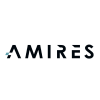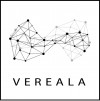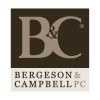1 Dec 2020
NIA Member Endomag raised $20m Series D scale-up capital to expand access to new advanced breast surgery techniques enabled by Endomag’s products. Read all about in Business Weekly HERE.
1 Dec 2020
The European Centre for Ecotoxicology and Toxicology of Chemicals (ECETOC) just launched its brand new NanoApp. We were very lucky to have them present and demonstrate it at our latest annual symposium.
The web-based tool has been designed to help industry register nanomaterials (chemical substances or materials that are manufactured and used...
25 Nov 2020
The European Commission’s Joint Research Centre (JRC) opens its scientific laboratories and facilities to people working in academia and research organisations, industry, small and medium enterprises (SMEs), and more in general to the public and private sector.
19 Nov 2020
Vireo Advisors is hosting a virtual workshop on Sunday December 13th as part of the Society for Risk Analysis’ Annual Meeting to discuss key issues facing the responsible innovation of advanced materials and technologies.
8 Nov 2020
ECHA has published a manual to support the preparation of dossiers contaning nanoforms. The comprehensive guide includes the specific requirements for single or sets of nanoforms, composition and analytical requirememnts (Annex VI), endpoint sections (Annex VII-X), and opt out scenarios.
8 Nov 2020
The NIA broadly welcomes the EU’s recently published Chemicals Strategy for Sustainability Towards a Toxic-Free Environment. It is a positive step forward towards delivering the Green Deal and the strategy highlights the importance of the chemicals sector overall and the fact that Europe already has within REACH one of the most comprehensive...
8 Nov 2020
As part of a service expansion to Members, NIA launched its service focussed on standards topics relevant to nanomaterials, with first quarterly report published in September, followed by a dedicated webinar in October.
Delivered by Denic Koltsov, of Brec Solutions, the report covered ISO TC229, ISO TC24/SC4, CEN TC352 and ongoing trends.
8 Nov 2020
The NanoHarmony Project, in which NIA is responsible for stakeholder interaction and which aims to address key end points for nanomaterials, hosted a global online workshop on November 3-5, with expert sessions following by a public plenary meeting.
8 Nov 2020
As a stakeholder to ECHA, NIA took part in the online 2020 Stakeholder meeting on October 29.
Whilst covering the full scope of work from ECHA, work relevant to nanomaterials directly and indirectly was covered through topics including:
4 Nov 2020
Yesterday, NIA hosted a webinar on the Safe Use of Nanomaterials in the Lab with over 150 registrations.
22 Sep 2020
After almost 4 years of research and development, NIA Member Burdinola has launched the first chamber tested to work with nanoparticles, guaranteeing maximum safety for both the user and the sample.
16 Sep 2020
Over 800 registrations were received for the webinar ''The pathway to Test Guidelines: from science to standards for nanomaterials' hosted by the EC-funded projects NanoHarmony (in which NIA is a partner) and NANOMET.
16 Sep 2020
NIA Corporate Members voted to confirm a new Board at the 2020 AGM, kick starting a 2 year term with the focus to continue NIA's expansion of membership, services to Members and global positioning as the voice of nanotechnology industries.
16 Sep 2020
NIA welcomes Dr Blanca Suarez Merino to the team as Director of Regulatory Affairs, stepping into the shoes of long time NIA team member David Carlander.
16 Sep 2020
NIA is very pleased to welcome its first new Member from Turkey, through SUNUM, Nanotechnology Research and Application Center.
16 Sep 2020
NIA welcomes Vireo Advisers into the nano family, with an expert team headed by Jo-Anne Shatkin.
16 Sep 2020
The Nanotechnology Industries Association (NIA) is delighted to welcome ZEON Corporation to its growing global community. ZEON, headquartered in Japan, with 58 operations world-wide, is a speciality materials producer including single wall carbon nanotubes (CNT). Following the emergence of CNT technologies from Japan, ZEON bec
16 Sep 2020
ECHA has published the substance evaluation conclusion for multi-walled carbon nanotubes (MWCNT), synthetic graphite in tubular shape and tangled, summarising how the information on the substance can be used for the purposes of regulatory risk management.
2 Sep 2020
The UK Health and Safety Executive has published latest guidance for the chemicals sector regarding requirements for materials following the end of the Brexit transition period on January 1st, 2021.
The guideance covers:



















